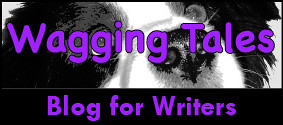Let’s say in this chapter I’m writing Jurgen discovers he is the father of ex-girlfriend Maria’s teenage son. That revelation at the end of the chapter is dramatic and emotional and vital to the rest of the story.
Let’s say the rough outline of this chapter is Jurgen bumps into Maria out shopping, he offers her a lift home, she invites him in for coffee, he sees a photo of the kid and there’s no mistaking the resemblance. Cue major drama.
It’s very easy to consider the reveal a big enough deal that everything else before it becomes very direct and simple. They bump into each other, say hellos, polite chatting, an offer of a lift etc. The big dramatic moment coming up is so omnipresent for the writer that everything else seems to take on added meaning. However, for the reader, that isn’t true.
A series of bland, mundane events in the life of two people will read just like what it is. When the moment of realisation comes for Jurgen, its meaning and implication will be clear, but the experience of getting to that point won’t be a particularly enjoyable one.
Not every scene is going to be a high-octane ride where the momentum keeps the reader glued to the page. Some scenes need to set stuff up, slow things down, and even portray normal life. So how do you do that without boring the reader to tears?



















































































































